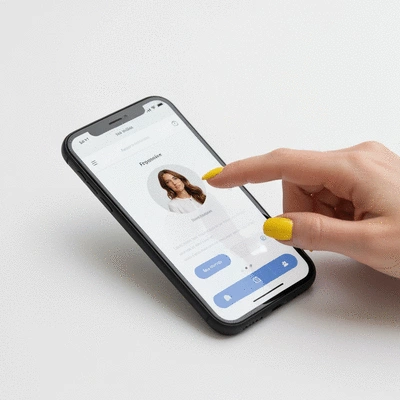Usability
Ensuring that your website is easy to use and navigate.
Join Elena Rivers' community for beginner-friendly tutorials, design tips, and free resources to build your stunning website.
Posted on: 2025-11-09
By: Elena Rivers
As you embark on the journey of building a website, consider this: a well-crafted user experience can make or break your online presence. What if you could transform your visitors into loyal customers simply by focusing on how they interact with your site? Dive into the essentials of UX design and discover the keys to captivating your audience!
Key components contributing to effective UX design highlighted below:
Ensuring that your website is easy to use and navigate.
Making your site usable for people of all abilities and disabilities.
Designing how users interact with the website elements.
Users often form opinions about your website within seconds.
When I first started my journey in web design, I quickly realized that creating a stunning website isn't just about aesthetics—it's essential to focus on User Experience (UX) Design. UX design revolves around how users interact with a website, and it's crucial for ensuring that visitors have a satisfying experience while navigating your site. But what exactly is UX design? Let's dive into it!
User Experience (UX) Design is all about enhancing the satisfaction of users when they interact with a product, in this case, a website. It encompasses various aspects, including usability, accessibility, and pleasure provided in the interaction. To put it simply, UX design is about creating a website that users find enjoyable and easy to navigate.
In my experience, focusing on UX can significantly impact how users perceive and interact with your site. Here are some key components of UX design:
As a new website creator, you might be wondering, "Why should I prioritize UX design?" Well, let me tell you, a great user experience leads to higher engagement, increased trust, and, ultimately, better conversion rates! When users feel comfortable navigating your site, they are more likely to stay longer and explore more.
Moreover, a well-designed UX can help differentiate your website from competitors. Consider these points:
User-centered design is at the heart of effective UX. It puts the needs and wants of the users first, guiding your design decisions. As I’ve learned throughout my journey with Website Design Free, incorporating user feedback during the design process is vital. Here are some key principles to keep in mind: To learn more about accessible design, check out our post on Practical Tips for Accessible Design.
By focusing on these principles, you can create a website that not only looks good but also feels right to your users. Remember, a positive user experience is the foundation upon which your online presence can thrive!
What aspect of UX design do you find most challenging as a new website creator? Share your thoughts below:
As you dive deeper into creating your website, it's essential to establish a solid foundation in UX design fundamentals. This will not only improve the overall aesthetic of your site but will also enhance user satisfaction and engagement. Let's put together a practical checklist to help you focus on the most critical elements of UX design as you develop your website.
Building a UX checklist is a fantastic way to ensure you're covering all the bases during your website development process. Here are some key elements to include:
With this checklist handy, you'll be able to create a user-friendly website that not only looks great but functions seamlessly. Remember, a well-structured site is key to keeping visitors engaged! For more tips on making your site mobile-friendly, read our guide on Building a Mobile-Responsive Website.
When you're developing your website, it's crucial to recognize the interconnection between UX and SEO. Here are some considerations to help you strike the right balance:
By focusing on these aspects, you can ensure that your website not only attracts visitors but also keeps them engaged with compelling content and seamless navigation.
A/B testing is a powerful tool that allows you to make data-driven decisions about your website's design and layout. This method involves comparing two versions of a webpage to see which one performs better. Here’s how to get started:
Implementing A/B testing empowers you to refine your website continually, ensuring you’re delivering the best possible experience to your users.
Now that you have a grasp of the UX fundamentals, let’s talk about the next steps you can take to further enhance your website. There are plenty of resources and strategies available to help you continue your learning journey!
Staying updated on the latest trends and techniques in UX design is crucial for your success. Here are some valuable resources you might find helpful:
By utilizing these resources, you'll be equipped to refine your skills and apply new knowledge to your projects!
As you build your website, remember that feedback is a goldmine for improvement! Here are some ways you can engage with your audience:
Incorporating feedback is crucial for creating a user-centric experience that resonates with your visitors!
Lastly, understanding UX metrics is vital for ongoing improvement. Here are some important metrics to track: For guidance on making informed decisions about your website's design and layout, consider learning more about choosing the best website builder that supports advanced analytics and A/B testing features.
By keeping an eye on these metrics, you'll gain valuable insights to continually refine and improve the user experience on your site, ensuring you meet the evolving needs of your audience!
UX Design focuses on enhancing user satisfaction by improving the usability, accessibility, and pleasure provided in the interaction between the user and a product, such as a website.
Prioritizing UX design leads to higher user engagement, increased trust, reduced bounce rates, and ultimately, better conversion rates. It helps differentiate your website and fosters brand loyalty.
User-centered design emphasizes understanding your users' needs and pain points, iterating on your design based on feedback, and striving for simplicity to minimize user frustration.
You can balance UX and SEO by optimizing your site structure, focusing on fast page load times, integrating relevant keywords naturally, and creating high-quality, engaging content that keeps users on your site longer.
A/B testing allows you to compare different versions of a webpage to identify which design elements or layouts perform best. This data-driven approach helps continually refine your website to deliver the best possible user experience.
Here is a quick recap of the important points discussed in the article:



 Did you know that almost 75% of users judge a company's credibility based on its website design? Cre
Did you know that almost 75% of users judge a company's credibility based on its website design? Cre
 As you embark on the journey of building a website, consider this: a well-crafted user experience ca
As you embark on the journey of building a website, consider this: a well-crafted user experience ca
 Have you ever considered how the right website platform can shape your business's online presence? C
Have you ever considered how the right website platform can shape your business's online presence? C